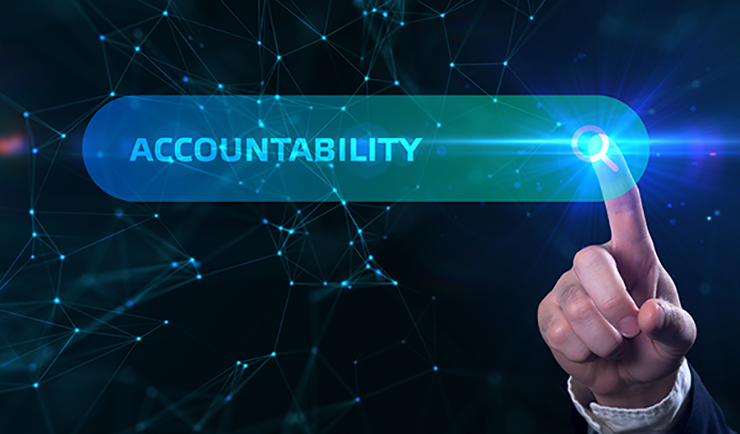
As a business leader, it’s tempting to charge in, identify what looks like inefficiency, and implement changes to make your mark.
The impulse to prove yourself as a decisive and innovative leader often pushes you toward altering systems and structures right out of the gate. But what if, in your rush to change things, you’re actually dismantling something valuable—something you don’t yet fully understand?
That’s where Chesterton’s Fence comes in. It’s a concept every leader should consider before rushing to make changes. This principle, though seemingly simple, can save organizations from unnecessary upheaval and wasted effort. It encourages leaders to pause and ask the crucial question: Why is this here in the first place?
What is Chesterton’s Fence?
G.K. Chesterton, a British philosopher, once said, “Don’t ever take down a fence until you know the reason it was put up.”
This simple idea has profound implications for leadership. In essence, it means that before you change or eliminate something, you need to understand why it exists.
In business, Chesterton’s Fence represents the established processes, policies, and structures that might seem outdated or ineffective at first glance. But the problem is, leaders often fail to ask why these systems were put in place before dismantling them. This is a critical error.
The fence may be preventing problems you can’t see yet. It might be there for reasons tied to legal compliance, institutional knowledge, or operational efficiency. Only when you’ve fully grasped the original purpose can you wisely decide if it should stay or go. Otherwise, you might make things worse by pulling down something essential.
The Leadership Trap: The Impulse for Change
If you’re a leader, particularly a new one, the pressure to change things is enormous. You feel the need to make an impact, to modernize, optimize, and demonstrate your leadership. And while that impulse is understandable, it’s also dangerous.
Leaders often think, “If it isn’t new, it must not be good enough.” But not every existing process is broken. Not every policy is outdated. What’s worse, making changes too quickly without understanding the system can lead to unintended consequences.
Take a common scenario: a new leader walks into an organization and immediately restructures teams, implements new technologies, and overhauls company policies. Sure, they’ve made their mark, but have they made things better? Often, these changes lead to confusion, frustration, and even a drop in morale. Why? Because these leaders didn’t take the time to understand why things were the way they were before they decided to “fix” them.
Change isn’t inherently bad. In fact, in some cases, it’s essential. But change for change’s sake can destroy what’s working and replace it with something worse.
The Dangers of Impulsive Change
Here are a couple of examples that illustrate what happens when leaders jump into change without understanding the reasons behind existing structures.
Case Study 1: A Policy Change That Backfired
I worked with a company years ago that decided to scrap a long-standing policy because it seemed old-fashioned. On the surface, the policy appeared unnecessary and restrictive. But what the new leadership didn’t realize was that the policy protected the company from legal exposure. By removing it without understanding its purpose, the company exposed itself to costly legal risks and took a huge financial hit.
Case Study 2: A Team Restructure Gone Wrong
In another instance, I was called to work with a newly appointed executive who had decided to reorganize a well-functioning team to streamline operations. However, the team’s original structure was designed with specific interpersonal dynamics and skill sets in mind. The hasty restructure disrupted those dynamics, and the team’s productivity plummeted. What appeared to be inefficiency was actually the key to their success, and it took months to rebuild the lost synergy. Trust was lost, and we took some time in rebuilding it.
In both cases, the leaders acted with good intentions, but their failure to apply Chesterton’s Fence led to negative outcomes. By failing to understand the “fences” they were tearing down, they caused more problems than they solved.
Applying Chesterton’s Fence in Your Business
So, how do you apply Chesterton’s Fence as a business leader? How do you avoid the trap of changing things that don’t need to be changed?
Here are three practical steps:
-
Investigate Before You Act
Before you make any change, ask yourself (and others) some basic questions: Why is this process or system in place? What problem was it originally designed to solve? Too often, leaders assume they know the answers without digging deeper. Your due diligence should prompt you to go beyond surface-level assumptions.
Take the time to talk to long-standing employees who have insight into why certain policies or structures exist. Look at historical performance data—what do the numbers say? By understanding the purpose behind the existing system, you’ll be better equipped to decide whether it’s really broken.
-
Identify What’s Working
As leaders, we tend to focus on fixing what’s broken. But sometimes, the most important question to ask is: What’s already working? There may be processes, teams, or systems in your organization that are performing better than you realize.
Resist the urge to assume that newer is always better. Yes, innovation is important, but it’s not a virtue in and of itself. There’s real value in preserving the things that are effective. The grass isn’t always greener on the other side; sometimes, it’s greener right where you are.
-
Make Incremental, Informed Changes
Once you’ve done your homework, consider making changes incrementally. Instead of tearing down the fence altogether, start by adjusting one section of it. Test new ideas in one department before rolling them out company-wide. Small, informed adjustments allow you to assess the impact without creating unnecessary disruption.
Pilot programs and incremental changes are a great way to innovate while respecting the structures that have served your organization well. It gives you the chance to correct course if things don’t go as planned.
When Change is Necessary
Of course, there are times when change is essential. Some processes are clearly outdated, some technologies truly need to be updated, and some systems are obviously inefficient. In those cases, by all means, take the fence down. But even then, do it thoughtfully, with a clear understanding of what you’re replacing and why.
Balance is key here. As a leader, you need to discern between necessary evolution and impulsive change. When you change, root it in data and a clear understanding of the organization’s current state.
Conclusion: Change Isn’t Always the Answer
Chesterton’s Fence offers business leaders a powerful lesson: before you change anything, understand why it exists. Sometimes, the best thing you can do is nothing at all—especially if the existing structures are working better than you realize. Effective leadership isn’t about changing everything you touch; it’s about making the right changes, at the right time, for the right reasons.
The next time you feel the urge to tear down a “fence,” take a moment to ask yourself why it was put there in the first place. You might be surprised at what you discover.
© Patti Cotton and patticotton.com. All rights reserved. Unauthorized use and/or duplication of this material without express written permission from the author is strictly prohibited. Excerpts and links may be used, provided that attribution is made to Patti Cotton and patticotton.com, with links thereto.

Patti Cotton reenergizes talented leaders and their teams to achieve fulfillment and extraordinary results. For more information on how Patti Cotton can help you and your organization, click here.





